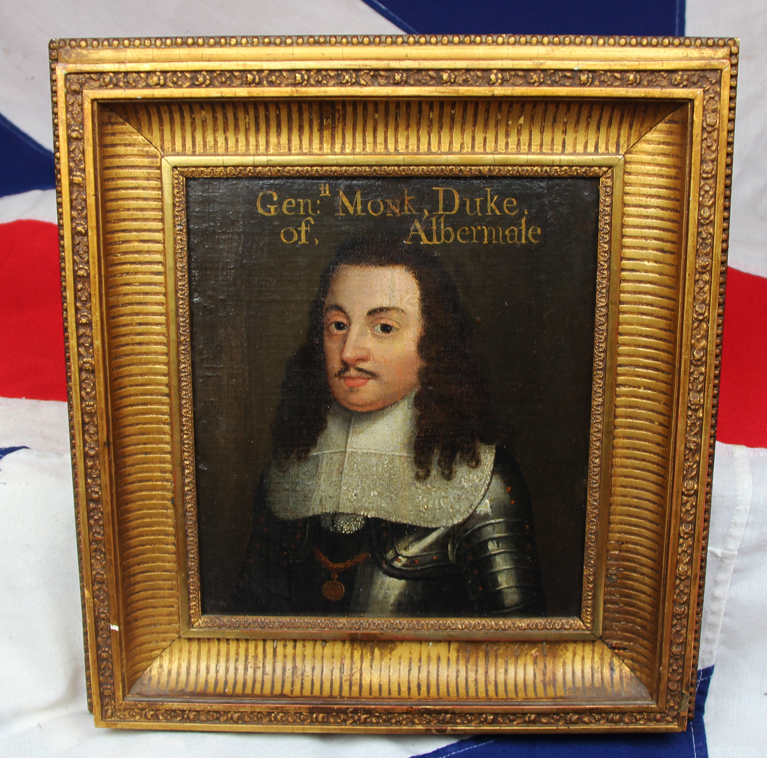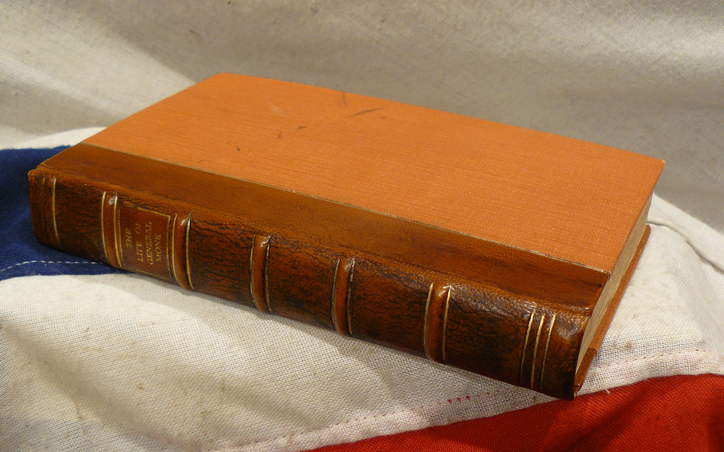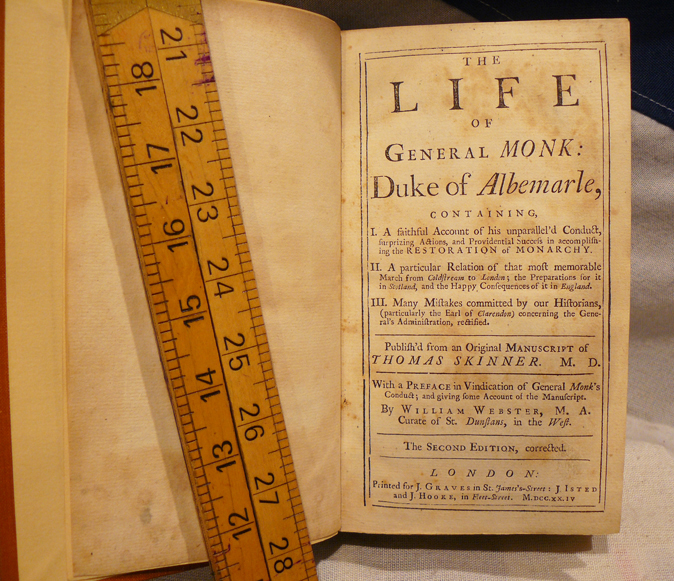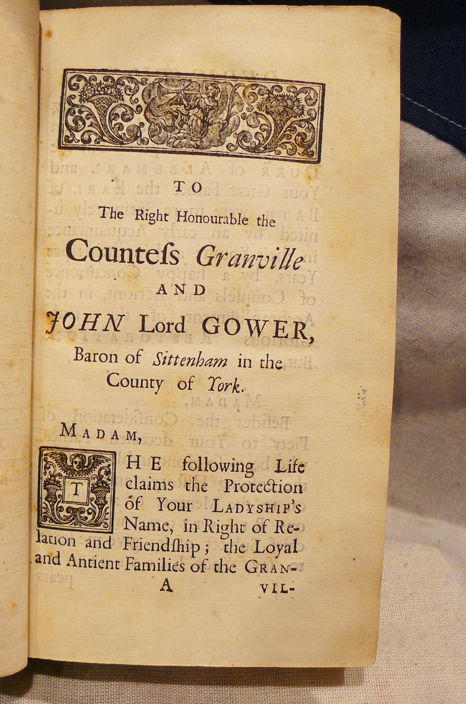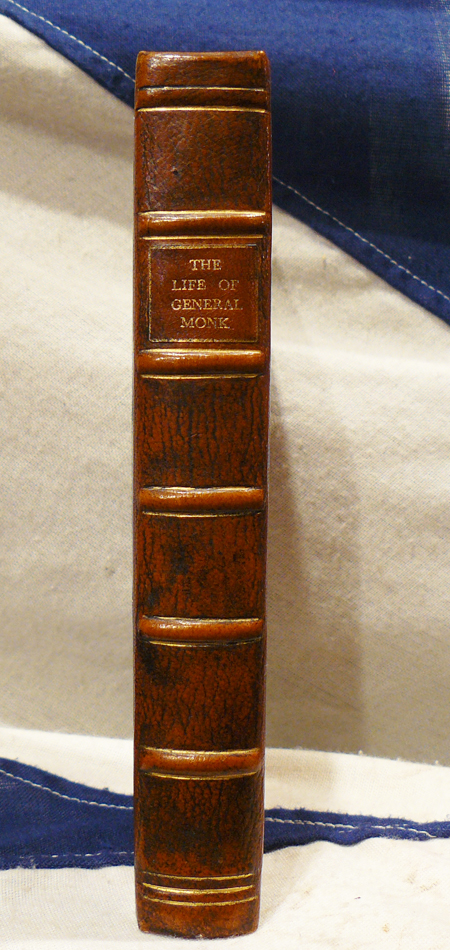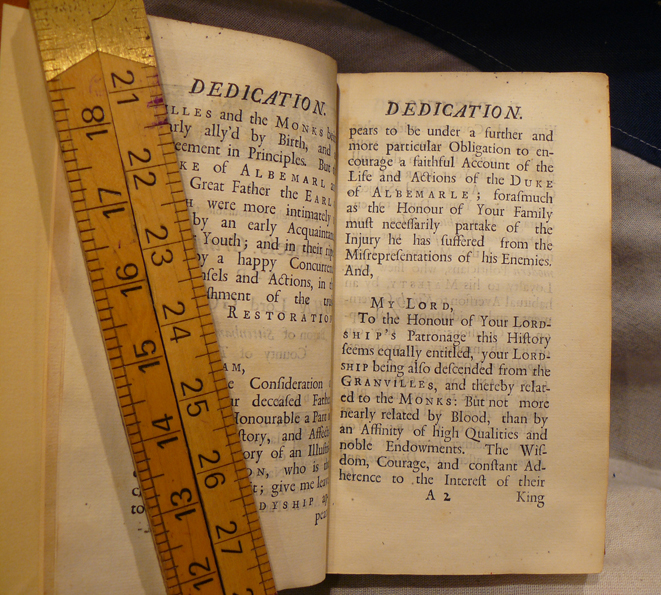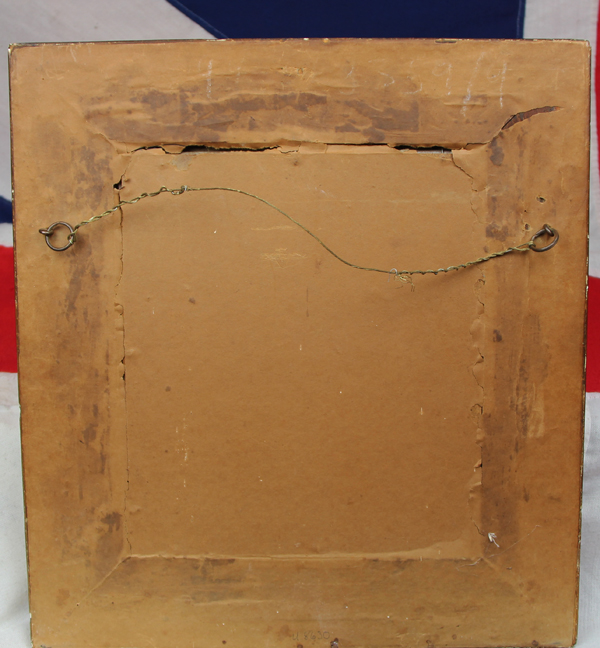SOLD An Original English Civil War Period Portrait of General George Monk & General Monk's Early Leather Bound Biography. IInd Edition Of Thomas Skinner M.D,'s Manuscript, Edited For J. Graves in St James'
A fine portrait After Samuel Cooper of George Monk, 1st Duke of Albemarle. Oil on canvas laid on board, inscribed Gen: Monk, Duke of Albermale upper centre. And a fine volume of The Life of General Monk, Duke of Albemarle 2nd Edit. 1724. George Monk, 1st Duke of Albemarle, KG (6 December 1608 - 3 January 1670) was an English soldier and politician and a key figure in the Restoration of Charles II. During the operations on the Scottish border in the Bishops' Wars (1639-1640) he showed his skill and coolness in the dispositions by which he saved the English artillery at the Battle of Newburn (1640).
At the outbreak of the Irish rebellion (1641) Monck became colonel of Robert Sidney, 2nd Earl of Leicester's regiment under the command of James Butler, 1st Duke of Ormonde. All the qualities for which he was noted through life his talent for making himself indispensable, his imperturbable temper and his impenetrable secrecy were fully displayed in this post. The governorship of Dublin stood vacant, and Leicester recommended Monck.
However, Charles I overruled the appointment in favour of Charles Lambart, 1st Earl of Cavan, and Monck surrendered the appointment without protest. James Butler, 1st Duke of Ormonde viewed him with suspicion as one of two officers who refused to take the oath to support the Royal cause in England and sent him under guard to Bristol.
Monck justified himself to Charles I in person, and his astute criticisms of the conduct of the Irish war impressed the king, who gave him a command in the army brought over from Ireland during the English Civil War. Taken prisoner by Parliament's Northern Association Army under Sir Thomas Fairfax, 3rd Lord Fairfax of Cameron at the Battle of Nantwich in January 1644, he spent the next two years in the Tower of London. He spent his imprisonment writing his Observations on Military and Political Affairs Monck's experience in Ireland led to his release. He was made major general in the army sent by Parliament against Irish rebels. Making a distinction (like other soldiers of the time) between fighting the Irish and taking arms against the king, he accepted the offer and swore loyalty to the Parliamentary cause. He made little headway against the Irish led by Owen Roe O'Neill and concluded an armistice (called then a "convention") with the rebel leaders upon terms which he knew the Parliament would not ratify. The convention was a military expedient to deal with a military necessity. When in February 1649 Scotland proclaimed Charles, Prince of Wales, as Charles II, King of Scotland, the Protestant Ulster Scots settlers did the same and following Charles's lead took the Solemn League and Covenant. Most of Monck's army went over to the Royalist cause, placing themselves under the command of Hugh Montgomery, 1st Earl of Mount Alexander. Monck himself remained faithful to Parliament and returned to England.
Although Parliament disavowed the terms of the truce, no blame was attached to Monck's recognition of military necessity. He next fought at Oliver Cromwell's side in Scotland at the 1650 Battle of Dunbar, a resounding Roundhead victory. Made commander-in-chief in Scotland by Cromwell, Monck completed the subjugation of the country.
In February 1652 Monck left Scotland to recover his broken health at Bath, and in November of the same year he became a General at Sea in the First Anglo-Dutch War, which ended in a decisive victory for the Commonwealth's fleet and marked the beginning of England's climb to supremacy over the Dutch at sea.
On his return to shore Monck married Anne Radford (nee Clarges).In 1653 he was nominated one of the representatives for Devon in Barebone's Parliament. He returned to Scotland, methodically beating down a Royalist insurrection in the Highlands. At Cromwell's request, Monck remained in Scotland as governor During the confusion which followed Cromwell's death on 3 September 1658, Monck remained silent and watchful at Edinburgh, careful only to secure his hold on his troops. At first he contemplated armed support of Richard Cromwell, but on realising the young man's incapacity for government, he gave up this idea and renewed his waiting policy. In July 1659 direct and tempting proposals were again made to him by the future Charles II. Monck was elected Member of Parliament for both Devon and Cambridge University in the Convention Parliament of 1660. Though he protested his adherence to republican principles, it was a matter of common knowledge that the parliament would have a strong Royalist colour. Monck himself, in communication with Charles II, accepted the latter's Declaration of Breda of 4 April 1660, which was largely based on Monck's recommendations. On 1 May the newly convened Convention Parliament formally invited Charles, as King Charles II, to be the English monarch in what has become known as the Restoration. The painting size is 27cm x 23.5 cm., and in its frame it is 16.75 inches x 15.5 inches
Code: 22723

